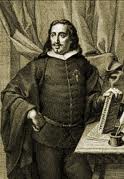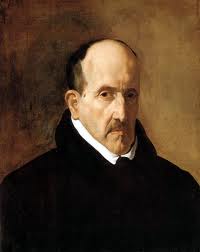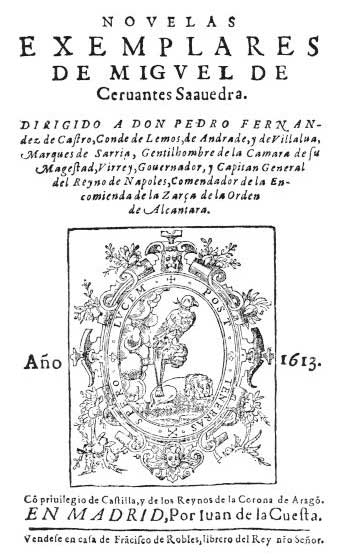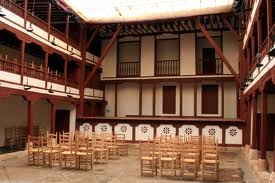Baroque Literature overview
The time during which the Baroque literature took place in Spain was a time of social, political and economic difficulties. After the Spanish Empire had reached its peak under the hand of Charles I, the reigns of the younger Habsburgs brought the county to ruins. Spain lost most of its lands outside the Peninsula and the wars against France left the nation in ruins. All in all, it was a difficult time in Spain.
Spanish Baroque Literature

The literary Baroque took place in Spain during the Golden Age of Spanish literature. It spans from the first works of Góngora and Lope de Vega around 1580 to the middle of the 18th century. The most characteristic century of the Baroque is the 17th century, when the best authors of the time published their most outstanding works.
Spanish Baroque literature has many common traits between the works of different authors, as it normally happens with artistic movements. During the Spanish Baroque, the authors suffered from a deep pessimism at the utter failure of the Renaissance ideals, which promised happiness and perfection. Instead, they got a world riddled with wars, sickness and deep economic and political problems. Disappointment set in, and life was regarded only as a journey through time during which anything and everything that was bad could, and probably would, happen. Death was regarded at the "cure" for this, as it promised peaceful rest and eternal salvation away form the agony of life's tragedies. This gave way to a deep preoccupation about the passage of time, a distrust of everything earthly and a deep melancholy characteristic to all Spanish Baroque literature authors. The Baroque symbolism was very rich, and to understand it all you'd need to take several courses on it, but some are skeletons and skulls, symbolizing the brevity of life, and clocks, symbolizing the passage of time.

There were a few different literary reactions to this pessimistic feeling, and each author developed their own way of expressing the unhappiness and dissatisfaction that the political, social and economical situation that Spain was going through caused them. Some, like Lope de Vega, tried to evade from the world that caused them so much pain by writing about the glories of days past or about some utopian, ideal world where every problem could be solved easily; others like Góngora preferred to hide within the folds of art and mythology. A more happy way of dealing with the harsh reality was by satirizing it, and this was Quevedo's way of evading from the world that displeased him. Still others tried to make people see the problems in their societies by writing about the human vanity and the fugacity of beauty and life, like Calderón; Gracián and Saavedra Fajardo preferred to criticize the apparent vices in society and propose alternative codes of conduct consistent with the political and religious ideology of their time.
Spanish Baroque literature assessed the absolute freedom the author had to create and distort shapes, and play with concepts and complex expressions, which was intended to surprise or impress the reader. There are two main movements during the Spanish Baroque:
- Conceptismo: Deriving from "concept", conceptismo is characterized by a quick rhythm, a direct and witty vocabulary and satirical wit. Meaning is conveyed in a concise manner, expressing mainly concepts. Quevedo was the main writer in the conceptismo movement.
- Culteranismo: Often referred to as "Gongorismo" after Luis de Góngora. This movement is characterized by ostentatious vocabulary, complex syntax and generous use of metaphors. It uses as many words as possible to convey little meaning, or to hide it. If you read any of these works today, you'd probably have to learn Spanish all over again, because the vocabulary is quite different from modern Spanish.
Prose in the Spanish Baroque Literature

During the Baroque, there were mainly two types of prose: fiction and didactic or instructive, although the boundaries between them were quite fuzzy. Often one would contain parts of the others and vice versa. Fiction writers wrote mostly picaresque novels, similar to the "Lazarillo de Tormes"; short novels like the "Novelas Ejemplares" by Cervantes, which normally took place in an urban setting, with characters from higher classes and topics like love or honor, and which usually ended happily; and folkloric stories with anecdotes that show the customs of the time. These folkloric stories were normally told as a dialogue between two or more people, and they tended to highlight some moral problem.
The Spanish Baroque was a time of great literary works and many important authors, but the most representative are:
- Miguel de Cervantes
- Francisco de Quevedo
- Lope de Vega
Poetry in the Spanish Baroque Literature
The poetry of the time reflected the characteristic contrasts found in other works. On one hand, there were serious poems about disappointment and death; on the other hand were humorous and satirical poems. These works commonly mixed the more cult forms of poetry, like the sonnet, with others closer to the folkloric literature, like couplets. Authors wanted to surprise the readers and make them admire him through the use of rhetoric and double meaning, which sometimes made them difficult to understand completely.
Although there are many important poetry writers during the Baroque, the most characteristic ones are:
- Luís de Góngora
- Francisco de Quevedo
- Lope de Vega
Theatre in the Spanish Baroque Literature

Plays took place in the "corral de comedia" a kind of public square without seats were people stood to watch them. Play normally started around 2pm and continued until it was dark. The stage was made out of wood planks and the decorations consisted of a painted curtain. There are several of these theatres still standing, and one of them in Alcalá de Henares, Madrid. The authors of the play (which would currently be the director) were not the ones who wrote it, but those that had the idea, and the play was written by a writer.
Baroque theatre didn't completely break off the Renaissance tendencies, but it did become less strict in the genre classification: plays no longer had to be either a comedy or a tragedy, they could be mixed. The great innovator was Lope de Vega, who created the "new comedy", a new kind of play with the aim of pleasing the audience and which was characterized by a predominance of action, rupture of unity (the plays had different settings), a mixture of tragedy and comedy, more metric variety and the adaptation of the language for each character, typical of the realism of Spanish Baroque literature.

